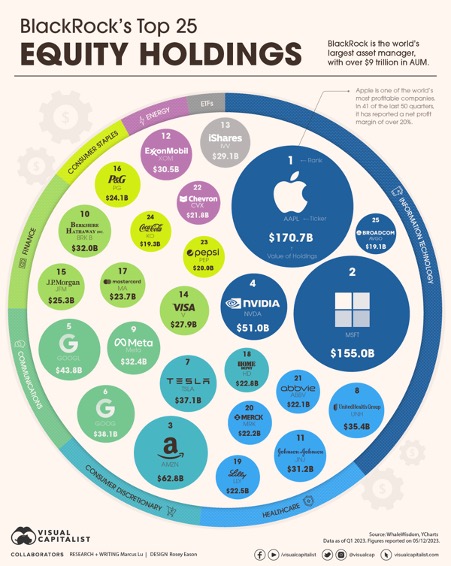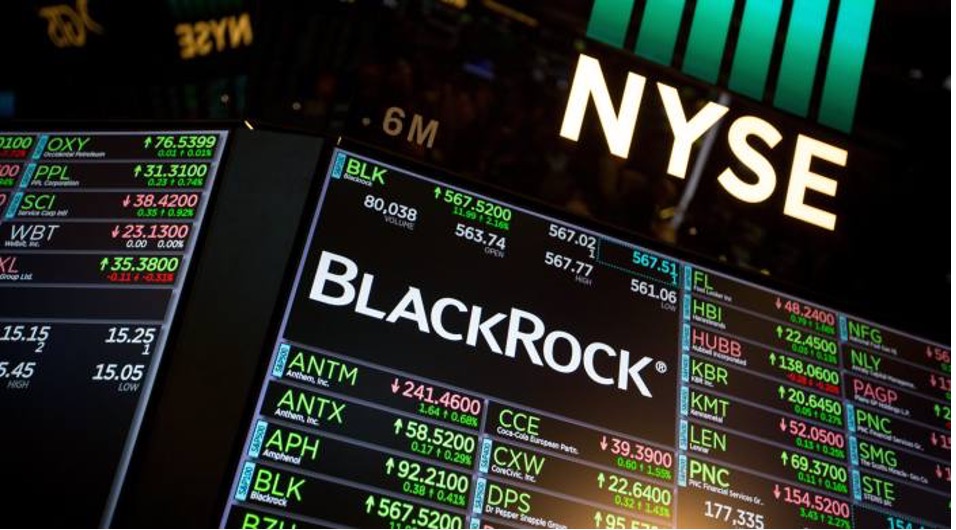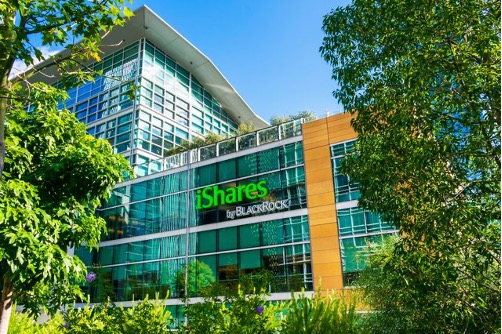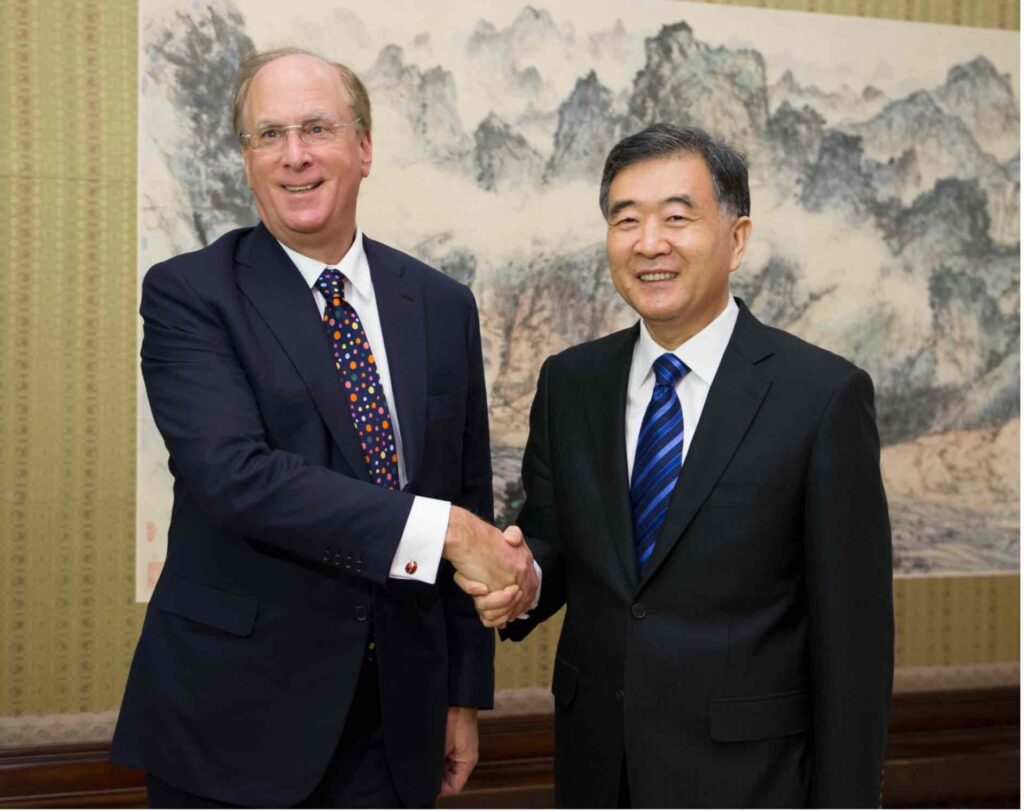I’m sure most of you have heard about the Big Four firms. But did you know about the three largest Index Fund Managing companies? Blackrock Inc., the Vanguard Group, and State Street Corporation are together known as ‘The Big Three’ firms because of the power they hold over most companies across the globe. They collectively manage around $22 trillion worth of assets and could easily control as much as 40 percent of shareholder votes in the S&P 500 in the next two decades.
Out of these three companies, BlackRock is often criticised for being the most powerful company in the world. As of today, BlackRock has $9 trillion worth of assets under management (AuM), which is way more than most country’s Gross Domestic Product (GDP).

Some sources basically call it the 4th branch of the US government, as this company has a history of easily influencing major policies and decisions of not just the US government but also the Federal Reserve in times of crisis- be it the 2008 financial crisis or the economic turmoil caused by the coronavirus pandemic in 2020; both of these periods of economic uncertainties were key to BlackRock’s rise to power.
So, how did Blackrock rise to what it is today? To understand this better, let’s dive into a bit of history.
Background
BlackRock’s CEO Larry Fink, used to be a successful investment banker until 1986 wherein his department lost $100 million dollars due to incorrect predictions about interest rates. This incident cemented his decision to start a company of his own that incorporated comprehensive risk management with asset management.
Later on, 8 members in 1988 founded BlackRock which, back then, was a simple New York-based start-up that provided asset management services to its client from a risk management perspective. Initially, Blackstone Financial Management had given Fink and his team a $5 million credit line. By 1989 when the business turned profitable the group’s assets quadrupled to $2.7 billion.
And since then, the company continues to grow exponentially; as of today, it operates in 38 countries and has a market capitalisation of $108.40 billion. Significant factors that contribute to this growth are the major mergers and acquisitions that took place over the years. In 1999, the company’s merger with PNC Financial Services Group helped it to expand and go beyond fixed income; and to move into equities, alternative investments, and more.
Merrill Lynch’s acquisition in 2006 marked a turning point for BlackRock, as this not only helped to diversify its operations but also expand its retail and international presence.
Furthermore, its acquisition of Barclay’s Global Investors (BGI) in 2009 solidified the company’s position as a leader in the asset management industry.

Present
And now comes the million-dollar question, how does BlackRock make so much money?
The answer lies in security lending, investment advisory & administrative fees charged to its clients by BlackRock’s subsidiary iShare and its software for investment portfolio management- Aladdin.
Launched in 2000, iShares is a product line of exchange-traded funds (ETFs) managed by BlackRock, Inc. and since its formation, it has become one of the most popular ETF providers globally.
An ETF contains diversified investments to reduce an investor’s risk. Rather than buying stock in a single company, you’re investing in a fund that buys stocks, commodities, and other securities. ETFs give investors a wide range of stocks at a low cost.
These marketable securities are at the heart of the BlackRock empire along with mutual funds. Out of the Big Three companies, Blackrock Inc. holds the most market share in the ETF market i.e. 36.9%, followed by Vanguard Group 19.4% and State Street Global Advisors 12.5%.
A strong track record, low costs, and broad product offerings have made iShares ETFs popular among both retail and institutional investors. iShares ETFs have accumulated approximately $2 trillion in assets under management (AUM)
These ETFs basically track various indices, such as the S&P 500, Dow Jones Industrial Average, or MSCI Emerging Markets Index. They aim to provide investors with diversified exposure to specific sectors, countries, or asset classes. One of the main benefits of iShares ETFs is their low cost. They generally have lower expense ratios compared to traditional mutual funds, making them attractive for cost-conscious investors. iShares also offers a wide range of ETFs across different investment themes, including equities, fixed income, commodities, and smart beta strategies.

BlackRock acts as the investment manager for the iShares products, handling portfolio management and trading activities. They employ a team of experienced investment professionals who strive to deliver competitive returns while managing risk.
Aladdin is a revolutionary software system in the investment industry. Released in 1988, Aladdin, which stands for Asset, Liability, and Debt and Derivative Investment Network is a robust investment management platform developed by BlackRock Inc. It uses Monte Carlo-styled algorithm to uncover scenarios in which an investment could fail. It offers a wide range of capabilities to support portfolio management, risk analysis, trading, compliance, and reporting functions. Aladdin’s comprehensive features make it a valuable tool for institutional investors to manage their investments, analyse risks, and make informed decisions.
As of 2020, Aladdin manages $21.6 trillion in assets and keeps track of about 30,000 investment portfolios, which is more than 10% of the world’s financial assets.
Have you ever wondered why a greater proportion of the world’s population is still not aware of the existence of the Big Three? They could very easily be featured in the news outlets on a regular basis as they also own 18% of Fox, 16% of CBS and 13% of Comcast, yet, they prefer to work in the shadows. These companies function on the belief that there is great power in anonymity. And to some extent, these companies have benefitted a lot by working in silence. They own a majority of shares of most companies across industries.
Another interesting part is that each of these Big Three Companies are major stakeholders of each other. Since they have considerable power and control over most industries, it creates an anti-competitive environment.
For instance, the prices of aeroplane tickets. BlackRock and Vanguard are among the five largest shareholders of the three biggest airline operators- this implies that there’s very little incentive to lower prices in order to compete with each other. Thus, this kind of ownership is dangerous for the global economy as it reduces consumer choice and raises prices.
Over the years critics have expressed their concern over their work ethics. It has been observed that BlackRock has a tendency to overlook human rights in favour of monetary gain.
Recently, BlackRock became the first global asset manager to have access to China’s mutual fund; leaving critics wondering, what did Fink promise Chinese President Xi to allow him access to the Chinese Communist Party’s funds?

Conclusion
According to analysts, it has been projected that BlackRock’s assets could surpass $15 trillion within the next five years. It will continue to remain among the top investor of every global giant, in fact, its influence will only grow as they acquire more companies. The US government’s and the Federal Reserves’ dependence on a company at times of crisis leads us to the question – are we progressing towards a future where companies hold more power than the government? How much power with a company is too much?
Written by – Shambhavi Gupta
Edited by – Monishka Agrawal
